Top 10 National Parks in IndiaThe national government declares an area a national park to preserve the ecosystem. A national park may be established for the general public's enjoyment or because of its historical importance or scientific value. Most of a national park's landscapes and the plants and animals that call them home are kept in their natural state. The national parks in India are class II protected areas, based on the IUCN (International Union for Conservation of Nature). India's first national park was established in 1936 in the Uttarakhand area, presently defined as Jim Corbett National Park. By 1970, India had just had five national parks. India established the Wildlife Protection Act and Project Tiger in 1972 and 1973, respectively, to safeguard the habitats of the species whose survival depends on conservation. According to the National Wildlife Database, in December 2020, India had 106 national parks covering 44,378 km2 (17,134 sq mi), or 1.35 % of the country's total area. The Protected Area Network Report also recommends 75 more National Parks for 16,608 km2 (6,412 sq mi) of additional land. The number of parks will rise by 176 when the study above is fully implemented. According to the Indian Ministry of Environment & Forests, a national park is "an area that the state government may designate as a national park because of its ecosystem, faunal, floral, morphological, or zoological association or importance, necessary to safeguard develop, or preserve wildlife here anyway or in its environment, whether it is inside or outside of a sanctuary. No human activity is allowed inside the national park, except those approved by the state's Chief Wildlife Warden following the limitations stated in Chapter IV of the WPA 1972 ". The Top 10 National Parks in India1. Jim Corbett National Park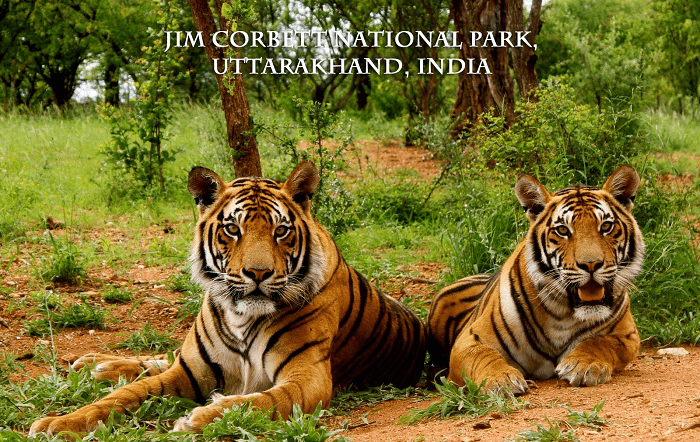
The Jim Corbett National Park is a true piece of Indian history and is home to countless birds, reptiles, mammals, and other wild species. This national park, situated in the Uttrakhand state's Nainital region, excites visitors from across the world with its abundant abundance of endangered wildlife, including tigers, elephants, and many other species. The father of Project Tiger, an initiative in India to protect some of the world's most endangered species and the Royal Wild Animal of India known as Tigers, is this Special Tiger Territory. Project Tiger is based in the largest Corbett Tiger Reserve, which is included in the Jim Corbett National Park in the Nainital region of Uttarakhand. The abundance of tigers in Corbett's majestic scenery is well-known. Corbett was initially formed in 1936 as Hailey National Park and is now India's oldest and most famous National Park. It is also known for hosting Project Tiger launched in 1973. The Corbett National Park, a haven for wildlife lovers, is always available to visitors from the Jhirna region. Dhikala, which opens on November 15, is the National Park's central zone (gate). Beginning in the middle of October, the Bijrani zone will be accessible. The monsoon season is when the pathways to Bijrani and Dhikala have washed away. Hence these areas are blocked during this time. The ideal time of year to see animals are exploring the forest in summer. In the winter, visitors may enjoy the full range of jungle experiences. Winter is the best season for seeing tigers and birds. The monsoon season is ideal for those who want quiet hiking and strolling while enjoying the park's varied flora. This season, Jhirna and a few other buffer zones are still accessible. The optimal time to go is between November 15 and June 15 so that visitors may see the full Jim Corbett National Park. Since the zones close at dusk, driving at night is not allowed in Corbett. 2. Ranthambore National Park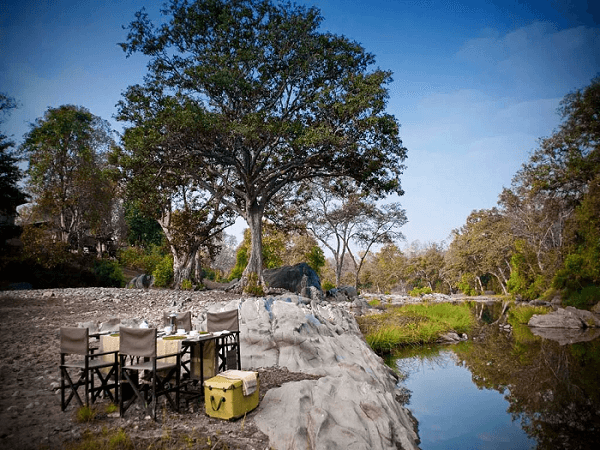
One of Northern India's largest and most well-known national parks is Ranthambore. The park is 130 kilometers from Jaipur in the Sawai Madhopur region of southeast Rajasthan. Its total area is 1,334 km2 (515 sq mi). The Banas River and the Chambal River define their northern and southern bounds. The famous Ranthambore Fort is located inside the park, thus the name. The first 282 km2 Ranthambore National Park was created in 1955 as Sawai Madhopur Game Sanctuary (109 sq mi). In 1973, it received the designation of a Project Tiger reserve, and on November 1, 1980, it became a national park. The Sawai Man Singh and Keladevi Sanctuary were established in the neighboring forests in 1984. In 1992, the Tiger Reserve expanded to include the nearby Keladevi Sanctuary in the north, Sawai Mansingh Sanctuary in the south, and further woodlands. The scenery of Ranthambore National Park, formerly thought of as one of the well-known and renowned hunting grounds of the Maharajas of Jaipur, is now a prominent tourist destination that has drawn the attention of many wildlife photographers and lovers. From October 1 to the last day of June each year, the Ranthambore National Park is available to visitors during the hours designated for safaris. Due to the rainy season, the park is not open to tourists from July through September. The ideal months to visit Ranthambore are November through April since the temperature is warm, and you can watch the animals without worrying about them being uncomfortable. There are two safaris daily, one leaving early and the other late afternoon, from October to June. After the monsoon, the park is lush and full of animals. 3. Kanha National Park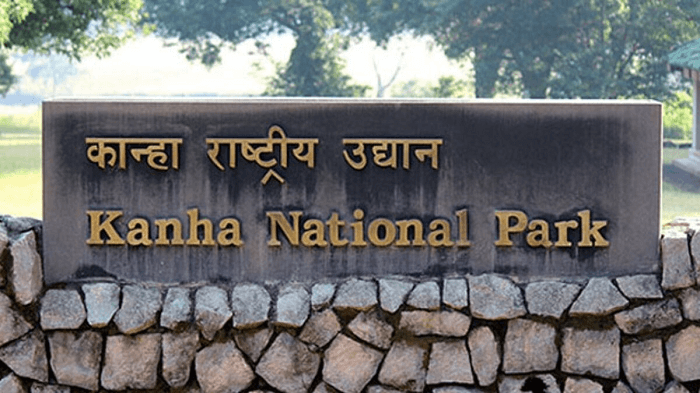
Kanha National Park was the setting for Rudyard Kipling's novel The Jungle Book. There are plenty of sal and bamboo forests, lakes, streams, and open grasslands, because of the extensive park's research and conservation efforts, many endangered animals have been safeguarded. The park is well-known for its tigers (the likelihood of spotting one has grown significantly in recent years), barasingha (swamp deer), and a wide range of other animals and birds. Nature lovers will appreciate it. One of India's largest national parks, the park has a core area of 940 square kilometers (584 sq mi) and a surrounding region of 1,005 sq. km (625 square miles). State of Madhya Pradesh, southeast of Jabalpur. The park has three gates. From Jabalpur through Mandla, the major entrance, Khatia Gate, is 160 kilometers (100 miles) away. Through Mandla-Mocha-Baihar, Mukki is reached from Jabalpur in around 200 kilometers. Between Khatia and Mukki, it is possible to drive past the park's buffer zone. On National Highway 12, around 150 kilometers from Jabalpur through Mandla, the Sarhi Gate is located close to 8 kilometers from Bichhiya. The following buffer zones are also in Kanha National Park: Khatia, Motinala, Khapa, Sijhora, Samnapur, and Garhi. 4. Kaziranga National Park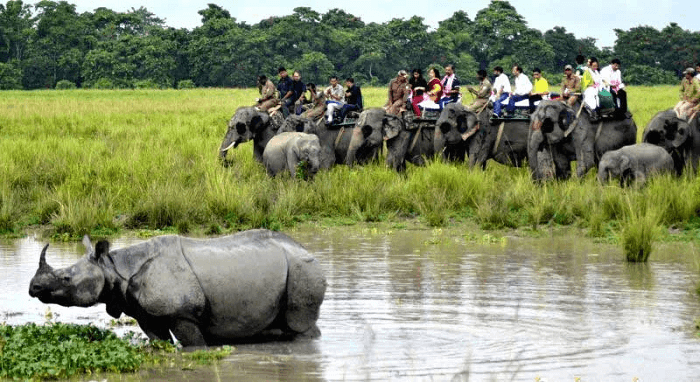
The world's greatest population of one-horned rhinoceroses is found in Kaziranga National Park and Tiger Reserve, named a UNESCO World Heritage Site in 1985. The national park is home to two-thirds of all one-horned rhinos worldwide. In the northeastern part of India, in the state of Assam, Kaziranga is quite far from the typical tourist routes, making it the perfect place for intrepid visitors. It is tucked away in the Eastern Himalayan foothills, a region noted for its distinctive biodiversity and unspoiled forest beauty. The one-horned rhinoceros, which flourishes in the marshy grasslands that occupy large portions of the park, attracts most tourists. However, there are plenty of additional species to watch here. Although sightings are few, the park is formally recognized as a tiger reserve since tigers live there. You could also commonly spot other wildlife, including wild boars, elephants, buffaloes, gaurs, monkeys, deer, otters, and leopards. The Brahmaputra, Diphlu, Mora Diphlu, and Mora Dhansiri rivers pass through the park. On a river safari on the enormous Brahmaputra River, which borders the park to the north, you may encounter blind Ganges river dolphins. Additionally, around 250 seasonal water bodies draw migratory birds from far-off places like Siberia. Taking a jeep safari around the park is the greatest way to experience Kaziranga. Four distinct ranges in the park may be visited, and each has its headquarters. The Burhapahar Range is in Gorakati, the Eastern Range is at Agoratuli, the Western Range is at Bagori, and the Central Range is at Kohora. Jeeps follow a predetermined path, and there are a few points where you can stop and exit the vehicle. Each range's safari trail lasts for around two hours, and many people aim to see two ranges in a single day. 5. Sundarbans National Park
The biggest mangrove jungle in the world may be found in Sundarbans, one of West Bengal's most popular tourist destinations. Over half of the 102 islands that make up the Indian portion are populated. Only accessible by boat, seeing the Sundarbans is a great experience that shouldn't be ignored. Don't expect to see any tigers, though. They like to stay well concealed in the reserve since they are so timid. Staying in eco-friendly village lodgings and taking part in community-based tourism are highlights. The Sundarbans National Park in West Bengal, India, is a national park, tiger reserve, and biosphere reserve. It is a piece of the Sundarbans in the Ganges Delta and is close to Bangladesh's Sundarban Reserve Forest. To the southwest of Bangladesh is where it is situated. The existing Sundarban National Park and the Sundarban Tiger Reserve's center area were established as wildlife sanctuaries in 1977 and 1973, respectively. On May 4, 1984, it was declared a national park. In addition to being a Ramsar site since 2019, it was included on the UNESCO World Heritage List in 1987. It has been recognized as a World Network of Biosphere Reserves member since 1989. The Sunderban Tiger Reserve has a total geographic area of 2585 km2, of which 1437.4 km2 are populated areas and the remaining 1474 km2 are covered by forest. It is located in the West Bengal state of India's South 24 Parganas district. 6. Gir Forest National Park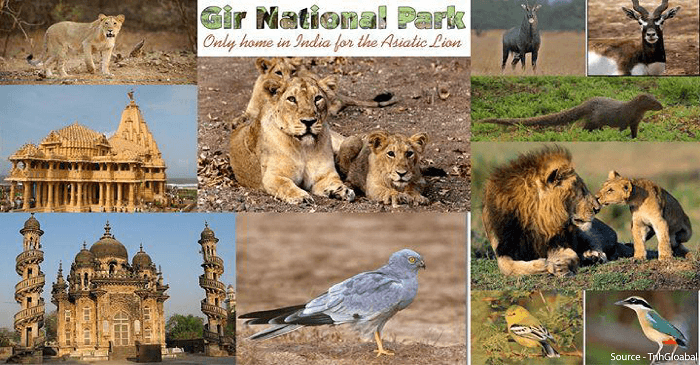
The Gir Forest National Park and Wildlife Sanctuary in Gujarat are among the best places to witness wild Asiatic lions in their natural habitat. Before its conversion as a sanctuary in 1990, it served as the Nawabs of Junagadh's hunting reserve. When it first began, there were just 12 lions; today, there are around 600. Other animals that could be spotted here include sambar, chinkara, chital, porcupines, wild boars, black deer, and others. Visitors may go on vehicle safaris here in the morning, late afternoons, and evening hours. You must visit one of India's most well-known national parks, which is this one! It may be found 60 kilometers (37 km) south of Amreli, 65 km (40 mi) east of Junagadh, and 43 km (27 mi) north of Somnath, close to Talala Gir in Gujarat, India. During the monsoon season, Gir National Park is closed every year from June 16 to October 15. November through March are the best months to visit Gir Forest, National Park. Due to the rainy season, Gir National Park is always closed from the middle of June until October 15, making it impossible to observe the abundance of flora and animals there. However, despite being hot, April and May are ideal for viewing Gir's incredible wildlife. 7. Periyar National Park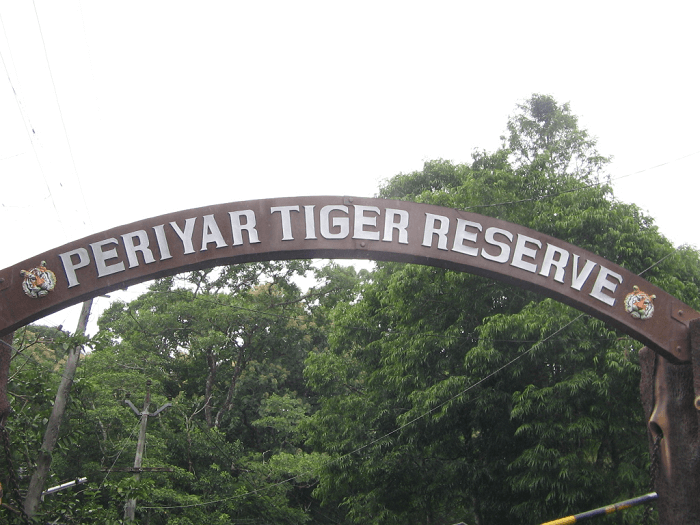
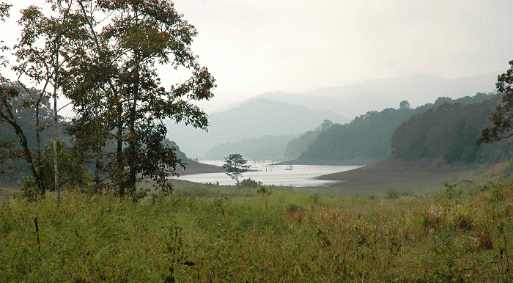
The 257-square-mile Periyar National Park in Thekkady, Kerala, is the best-protected reserve area in India. The stunning park also has beautiful elephants, regal tigers, numerous fish, reptiles, birds, and other animals. The park is renowned for its tranquility, lush surroundings, and extraordinary fusion of beauty and adventure. It is arguably India's largest national park. The Periyar National Park was established in 1982 and now covers 305 km2 (118 sq mi) of the protected region's total 925 km2 (357 sq mi). The region attracts thousands of tourists annually due to the range of activities. You may choose from boat tours, jungle excursions, and ecotourism activities, including bullock cart tours, bamboo rafting, jungle patrol, bamboo grove, Periyar Tiger Trail, jungle camp, border hiking, and jungle inn. The ideal months to explore Periyar National Park are from September to June. The park acts as the principal watershed for the Periyar and Pamba, two important rivers in Kerala. It is a repository for uncommon, endemic, and endangered plants and animals. The national park is covered with lush flora from late September to early October, thanks to the monsoon season's rainstorms. The landscape becomes greener, and the beautiful weather continues. 8. Manas National Park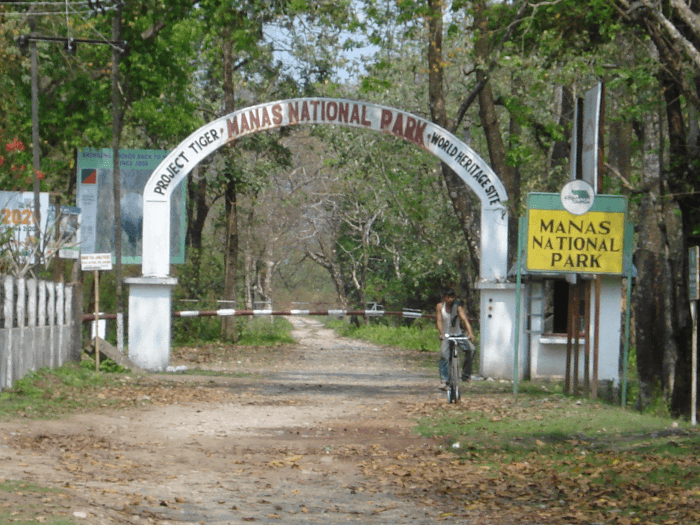
Assam's Manas National Park is a Biosphere Reserve, an Elephant Reserve, and a Project Tiger Reserve. Additionally, it is a part of the UNESCO Natural World Heritage. UNESCO named it a World Heritage Site in December 1985. This reserve is renowned for its rare red panda and golden langur, as well as for its stunning landscapes, unspoiled surroundings, and abundant biodiversity. While riding an elephant, you may easily see tigers and rhinoceros. The park is renowned for preserving the greatest number of Indian endangered species recognized in the IUCN Red Book. India's largest tiger reserve is the Nagarjunsagar-Srisailam Tiger Reserve. The Manas River is whence the park gets its name. The Manas River is a significant tributary of the Brahmaputra River, which flows through the center of the national park. The rare and endangered native creatures found in the region include the Assam roofed turtle, hispid hare, golden langur, and pygmy hog. Manas is noted for its population of wild water buffalo. The ideal times to visit the Manas National Park are from October to April when the weather is favorable, and there is a good possibility of seeing various animals. The national park has a semi-tropical climate with hot, muggy summers, chilly winters, and much monsoon rain. On October 1, 1928, the Manas National Park, which has 360 km2 in size, was designated as a sanctuary (140 sq mi). Manas R.F. and North Kamrup R.F. were the names of the reserved forests before the sanctuary's designation. The Manas Bio Reserve was founded in 1973. 9. The Great Himalayan National Park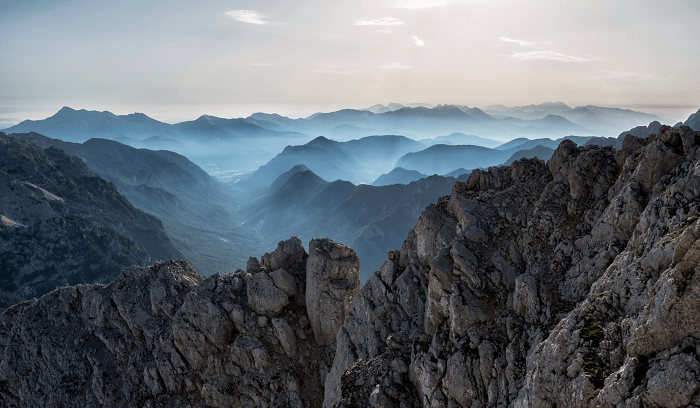
Great Himalayan National Park, which lies in Himachal Pradesh's Kullu area, is a haven for various animal species. The Great Himalayan National Park (GHNP), located in the Banjaar Subdivision of Kullu District, is a part of the Far Western Himalaya in Himachal Pradesh, India. In June 2014, the Great Himalayan National Park was included in the UNESCO list of World Heritage Sites. The park is a haven for nature enthusiasts and a fantastic area for tourists to unwind from the city's bustle. In 1999, it was given national park status. It now supports more than 375 species of fauna, including 181 species of birds and 31 species of mammals. This lovely park hosts a few fairs in April, May, August, and September. The park covers an area of 1171 km2 and has heights that range from 1500 to 6000 m. It was founded in 1984. The Great Himalayan National Park is home to around 375 different animals, including roughly 31 mammals, 181 birds, 3 reptiles, 9 amphibians, 11 annelids, 17 mollusks, and 127 insects. The summer season, which runs from April to June, and the winter season, which runs from December to February, are the best times to visit the Great Himalayan National Park. 10. Dudhwa National Park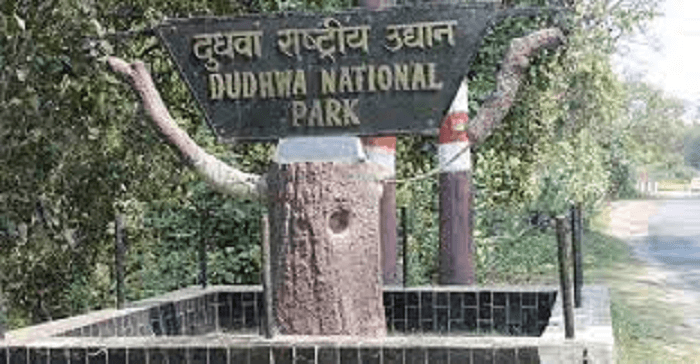
The Dudhwa National Park is located in the Terai area of marshy grasslands in northern Uttar Pradesh, India. A 190 km2 buffer zone covers an area of 490.3 km2 (189.3 sq mi) (73 sq mi). It is a piece of the Dudhwa Tiger Reserve in the Kheri and Lakhimpur districts. The region was created in 1958 as a swamp deer nature reserve. Dudhwa received the designation of a tiger reserve in 1979. One of India's finest woods may be seen in the park; some trees are over 150 years old and stand over 70 feet (21 meters) tall. For those who enjoy the outdoors and animals, Dudhwa National Park is the ideal destination because of its biodiversity, natural beauty, and diversity. The Hispid Hare, Tiger, Swamp Deer, Leopard, and Bengal Florican are just a few unique and endangered species found in one of the best tiger reserves. Nearly 400 bird species call the area home, including many migratory species, including kingfishers, bulbuls, woodpeckers, owls, orioles, bee-eaters, and barbets. Dudhwa National Park is best visited between November and April. The park is open for several months each year, from November 15 to June 15. ConclusionThere are 106 national parks in India, according to data from the National Wildlife Database as of 2022. The area they occupy is 44,378 square kilometers. This region makes up 1.35% of the country's overall geographic area. In India, there isn't a single state without a national park. India's Madhya Pradesh state has the most national parks. India's smallest national park is South Button Island National Park, located in the Andaman and Nicobar Islands. It is 0.03 square kilometers in size. It looks like a rock sticking out of the sea.
Next TopicTop 10 Pakistani Dramas
|
 For Videos Join Our Youtube Channel: Join Now
For Videos Join Our Youtube Channel: Join Now
Feedback
- Send your Feedback to [email protected]
Help Others, Please Share









